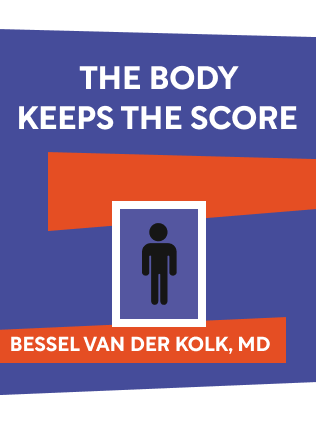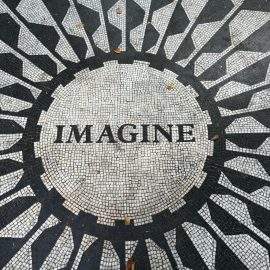

This article is an excerpt from the Shortform book guide to "The Body Keeps The Score" by Bessel van der Kolk. Shortform has the world's best summaries and analyses of books you should be reading.
Like this article? Sign up for a free trial here .
Are memory loss and PTSD connected? How does trauma impact how your memory works?
Memory loss and PTSD are connected by trauma. But trauma memories aren’t always the same as other memories, and can be impeded by the brain’s efforts to protect us from trauma.
Read more about memory loss and PTSD and how they are connected.
Memory Loss and PTSD: Traumatic Memory
Under normal circumstances, human memory is unreliable. Your memories are not objective recordings of events, but rather your perspective of an experience, colored by context and personal meaning. Ordinary events easily escape your memory, and those that are unusual stick a little better.
In contrast, events that cause a negative reaction such as stress, fear, or dislike — triggering the body to release adrenaline — are preserved best in your memory. Up to a point, the more adrenaline your body secretes, the better you remember the event (even if you don’t remember all the details, you’ll vividly recall how it made you feel); however, if the experience is overwhelmingly terrifying and inescapable, your body will shut down in response. This is PTSD memory loss.
In the face of trauma, your frontal lobe shuts down, and with it you lose your ability to articulate your feelings, your sense of time, and your ability to make sense of your body’s sensations and store that information. The emotional brain takes over, setting off changes in your emotional arousal, physiological reaction, and muscle activity. All this causes the trauma to be stored as fragments of sensory information — sounds, smells, sensations, and images — instead of a coherent narrative. Trauma and memory loss is common for traumatized people.
Since your brain fails to integrate the traumatic event into the timeline of your life and experiences, traumatic memories remain frozen in time. This is why their effect remains so powerful after years and even decades. A long-term study of memory conducted on WWII soldiers from the early 1940s to the late 1980s found that while many of the men’s memories faded with time, those with PTSD had nearly perfect memories of their traumas more than four decades later.
With trauma and memory loss, treatment must work toward integrating the memories of a traumatic event into your narrative of life, so that your brain can register that the event is in the past.
The Connection Between Memory and Trauma
Trauma survivors often don’t remember the event at all until a sensation associated with the trauma triggers memory fragments. When those memories are triggered, they may reenact the event, either precisely replaying their part or having playing out some other actions. (For example, a veteran would pretend to rob a store, with only a finger in his pocket to look like a gun, in hopes of getting caught by police. He did this every year on the anniversary of his friend’s death, attempting to somewhat end his life by getting arrested out of guilt for surviving instead of his friend.)
Despite some controversy around the validity of repressed memories — especially in legal cases, including some against priests accused of sexual abuse — PTSD memory loss has been well documented among traumatized people who’ve been through natural disasters, accidents, war, concentration camps, kidnapping, torture, and abuse. It’s most common in childhood sexual abuse survivors, and tends to be more severe for if the abuse happened at a younger age and by someone the child knew.
Memories are preserved as long as they are inaccessible, but the more you retrieve the memory and retell it, the more it gets altered. This is because your mind is programmed to make meaning out of things, so it shapes memories to make sense according to your experiences.
Evolution of Traumatic Memories
Trauma and memory loss works like this. People recall traumatic memories differently than positive memories in two main ways:
- Traumatic memories are disorganized; they aren’t in a coherent narrative, with a beginning, middle, and end, They return in sensory fragments.
- People have physical reactions to traumatic memories.
Often people with PTSD memory loss initially can’t bring themselves to talk to anyone about the event. Most experience flashbacks and, over time, are able to make some sense out of the spurts of sensory memories. Eventually, many survivors can put together the general story of the traumatic event that they can relay to others.
Talk therapy and cognitive behavioral therapy take the view that when survivors tell the story of their traumas, it eventually desensitizes them to the trauma. However, the author’s research disputes the fact that merely talking about the event is enough to lessen the severity of flashbacks, stress, and other post-traumatic symptoms. Memory loss and PTSD are connected, but therapy can help.
“Shell Shock”
During World War I, many soldiers returned home showing strange behavior: odd physical postures, memory loss, unexplained medical issues, scared facial expressions, and physical tics. The British soon came up with a diagnosis: shell shock. This was an early connection of memory loss and PTSD.
As more and more soldiers appeared to be stricken with shell shock, it posed a dilemma for the British military: They faced dwindling numbers of healthy soldiers to fight the Germans, and they had to pay out disability pensions for soldiers with this diagnosis. So the British military began to discredit shell shock as nothing more than the result of lack of discipline, unwillingness to fight, and mental weakness; similarly, there was a lack of understanding and treatment for traumatized veterans in Germany and the United States.
At the onset of World War II, the diagnosis of shell shock essentially took on a new iteration: war neuroses. However, the WWII veterans symptoms didn’t exhibit tics and paralysis like the WWI veterans; instead, they suffered upset stomachs, racing heartbeats, panic attacks, and suppressed anger. Although the trauma was similar, the culture of the time appeared to impact how their trauma manifested.
Until trauma was recognized as an ailment in itself, many patients focused on the physical symptoms that resulted — like stomach and sleep issues, headaches, and chest pains — because that’s what available treatments could address. But memory loss and PTSD shows that trauma leads to many symptoms.

———End of Preview———
Like what you just read? Read the rest of the world's best book summary and analysis of Bessel van der Kolk's "The Body Keeps The Score" at Shortform .
Here's what you'll find in our full The Body Keeps The Score summary :
- How your past trauma might change your brain and body
- What you can do to help your brain and body heal
- Why some trauma survivors can't recognize themselves in the mirror






